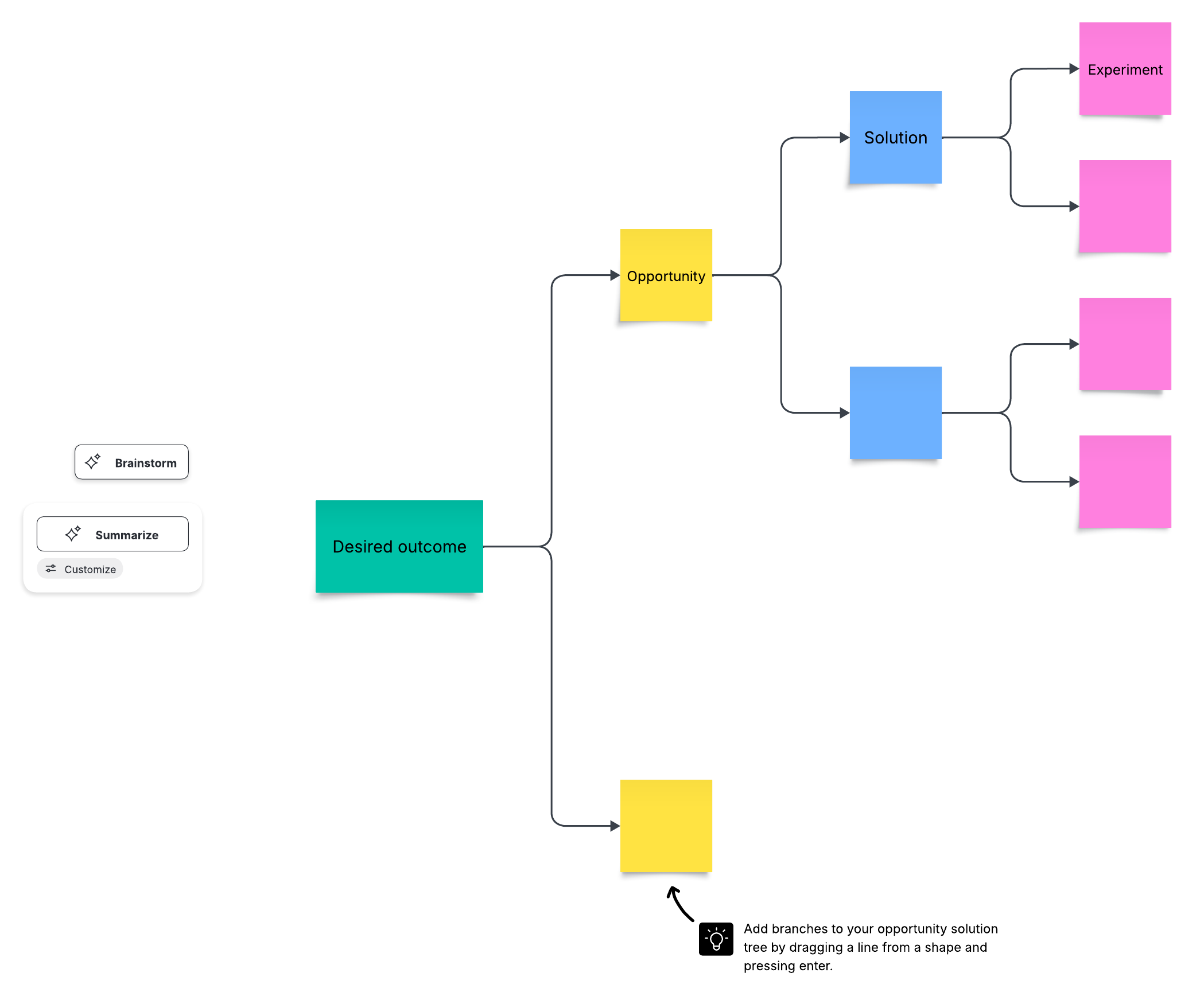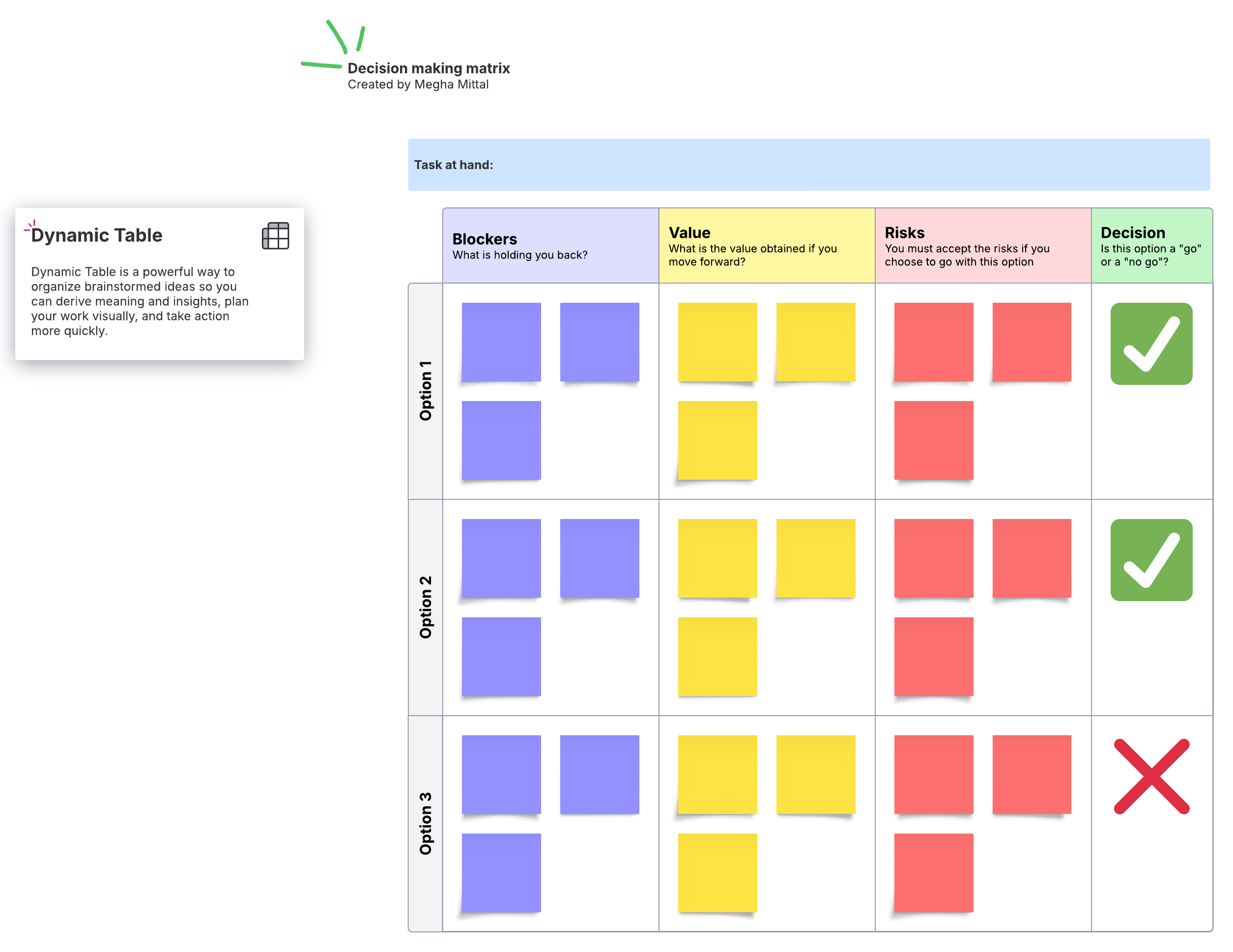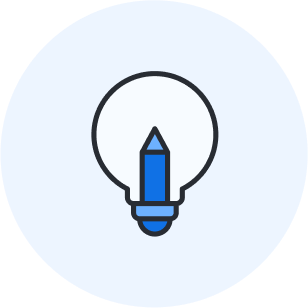There’s likely not one direct route to reach your goals. In reality, there are probably many different routes that could potentially lead to success. You’ll want to gather as much data as possible to make an informed decision and maximize your chance at success. One great way to structure this process is by creating an opportunity solution tree.
What’s an opportunity solution tree?
Opportunity solution trees (OSTs) are diagrams that help you visualize potential paths you could take to reach a desired outcome. The diagram is built out to represent customer needs and pain points, possible solutions, and assumption tests. Its goal is to help you identify the best path forward.
Opportunity trees can be used by any team or individual, but they’re often used by product teams while they’re working through the product discovery process. OSTs are a great way to identify gaps and organize non-linear ideation flows.
Benefits of opportunity solution trees
There are many reasons to try out a solutions tree. Here are just a few:
-
They’re a great way to find a solution that considers both business and customer needs.
-
They help teams agree on how and why they’re moving forward, securing greater buy-in overall.
-
They allow you to make more informed decisions confidently.
-
They help you stay organized.
How to create an opportunity solution tree
Here are the basic steps that are represented in an OST. Of course, these can be personalized according to your needs. Don’t forget to document the steps along the way in your diagram!

1. Identify your desired outcome
This outcome could be anything from a metric you want to improve to a new product you want to develop to a market you’d like to break into. The more specific you can get in this step, the better. For example, narrowing your goal to a single, measurable metric, like revenue or customer satisfaction, will make the process more productive.
2. Collect data and customer stories
Data and customer stories will help you discover opportunities to improve and possibly uncover solutions or possibilities you may not have considered yourself. Inquire: What do customers like about your current product? What are their pain points? Learning more about what your customers need is a vital step that informs which potential path is the most productive to pursue.
3. List opportunities
Develop a list of possible opportunities to the pain points discovered in the second step. What opportunities do you see for improvement? Remember—there are no wrong answers when you’re brainstorming. Get down every possibility you can think of.
4. Experiment with the solutions
Experiment to evaluate and iterate on possible solutions from the identified opportunities. While you build on them, keep your desired outcome in mind so you don’t lose sight of your ultimate goal. We recommend setting a time-sensitive goal for this step so you don’t get too caught up in experimentation and can move forward at a decided point. See if you can narrow down the solutions to a handful that seem the most promising.
5. Share findings with stakeholders
Once you’ve narrowed down ideas, it’s time to share them with the stakeholders along with the underlying data that led to your determination. At this point, your goal is to decide on the best idea to pursue and secure buy-in to move forward with it.
Lucid offers several features that simplify making this decision. Voting and emoji reactions are great for taking the temperature of stakeholders. Templates kickstart the process of making a difficult decision. Visual Activities can also help you assess how others are feeling about a certain direction, so you can confidently move forward.

6. Implement the solution and repeat
Congratulations! You’ve made it through the process, and it’s time to implement your chosen solution and see if it gets you to your desired outcome. Don’t worry—if it doesn’t, you can always go back and try another solution.
Use Lucidspark to create your opportunity solution trees
If you’re ready to determine the best path forward with an opportunity tree, try Lucidspark to make the process faster and more organized. Lucidspark is optimized for collaboration as you riff on ideas, ideate, and share ideas with stakeholders. If you get caught up brainstorming, try Collaborative AI to generate more ideas and open your mind to possibilities you hadn’t yet considered. Plus, Lucidspark’s free opportunity solution tree template makes it easy to create your own.

Dive deeper into the ways that Lucid can help you make decisions.
Learn moreAbout Lucid
Lucid Software is the leader in visual collaboration and work acceleration, helping teams see and build the future by turning ideas into reality. Its products include the Lucid Visual Collaboration Suite (Lucidchart and Lucidspark) and airfocus. The Lucid Visual Collaboration Suite, combined with powerful accelerators for business agility, cloud, and process transformation, empowers organizations to streamline work, foster alignment, and drive business transformation at scale. airfocus, an AI-powered product management and roadmapping platform, extends these capabilities by helping teams prioritize work, define product strategy, and align execution with business goals. The most used work acceleration platform by the Fortune 500, Lucid's solutions are trusted by more than 100 million users across enterprises worldwide, including Google, GE, and NBC Universal. Lucid partners with leaders such as Google, Atlassian, and Microsoft, and has received numerous awards for its products, growth, and workplace culture.
Related articles
The product designer’s toolkit for simplified documentation
In this article, we've compiled a toolkit of templates for common product designers' use cases.
Guide to strategic decision-making: Tools and techniques to make better business decisions
Strategic decision-making is the backbone of great leadership, but it’s not always easy to implement. Get our best decision-making tips here.
How Lucid helps you make decisions with confidence
Learn about how Lucid helps streamline decision-making, visualize impact, capture feedback, and interpret data effectively.
A step-by-step strategic planning guide
Tired of theoretical planning resources? You’re in the right place. Here’s our actionable strategic planning guide.

